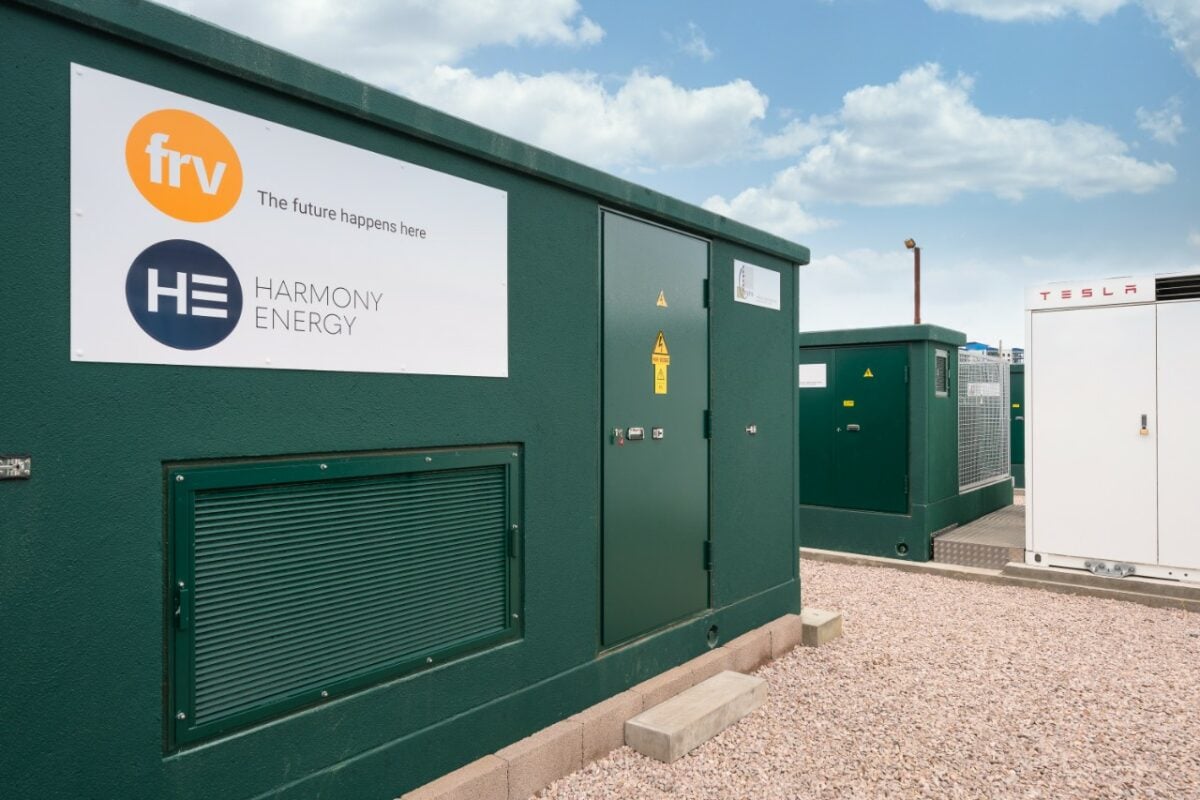
Envision to supply BESS for two Harmony Energy projects totalling 166MWh. Image: Harmony Energy.
Chinese multinational corporation Envision Energy has agreed on a partnership with Harmony Energy Income Trust to provide battery energy storage systems (BESS) for projects in the UK.
The strategic partnership will see BESS implemented into a number of Harmony Energy’s power plants in Wormald Green and Hawthorn Pit.
Envision Energy will develop liquid-cooled energy storage systems which are capable of providing energy time-shifting, capacity services and frequency regulation services.
Harmony Energy Income Trust invests within the battery energy storage sector and currently operates 109MW/218MWh of BESS in the UK with a further 286.4MW/572.8MWh under construction.
The firm recently saw its asset value grow by 24.84% to £257.8 million in its first full year since the IPO, with demand for storage assets surging in Britain.
During the year ending 31 October 2022, the company secured a debt finance facility of up to £60 million from NatWest, which included an accordion for a further £70 million, to allow the company to acquire and construct its first pipeline of projects.
Included within this project pipeline are Wormald Green and Hawthorn Pit. The BESS’ allocated are set to commence manufacturing in Q2 2023 and both anticipated to be fully completed and connected to the grid in Q1 2024. Wormald Green has a storage capacity of 33MW/66MWh whereas Hawthorn Pit has a slightly higher storage capacity of 49.9MW/99.8Mh.
According to Envision, its expertise lies in full-stack technical capabilities ranging from battery technologies to energy storage systems. This has also seen it support the deliverance of two-hour duration BESS.
This could strengthen Harmony Energy’s vision with the company also exploring two-hour duration BESS projects. As of the end of the first year since the company’s incorporation, it had six two-hour duration BESS projects totalling 312.5MW/625MWh.
In a recent conversation with Solar Power Portal, Harmony Energy’s CEO, Peter Kavanagh expressed his concerns around grid connection delays and the impact it could have on the market.
“Anyone coming into the industry now is going to struggle to find any connections that can connect before 2030, it's gotten that bad,” Kavanagh said.
“The way I'm seeing it is there's an awful lot of very large projects, which I'm not convinced will actually ever get built. This is because you're talking about a lot of risk on a single point of connection, say, for example, a 400/500MW battery – one transformer at that size takes a long time to order and it's a huge single point of failure.”

